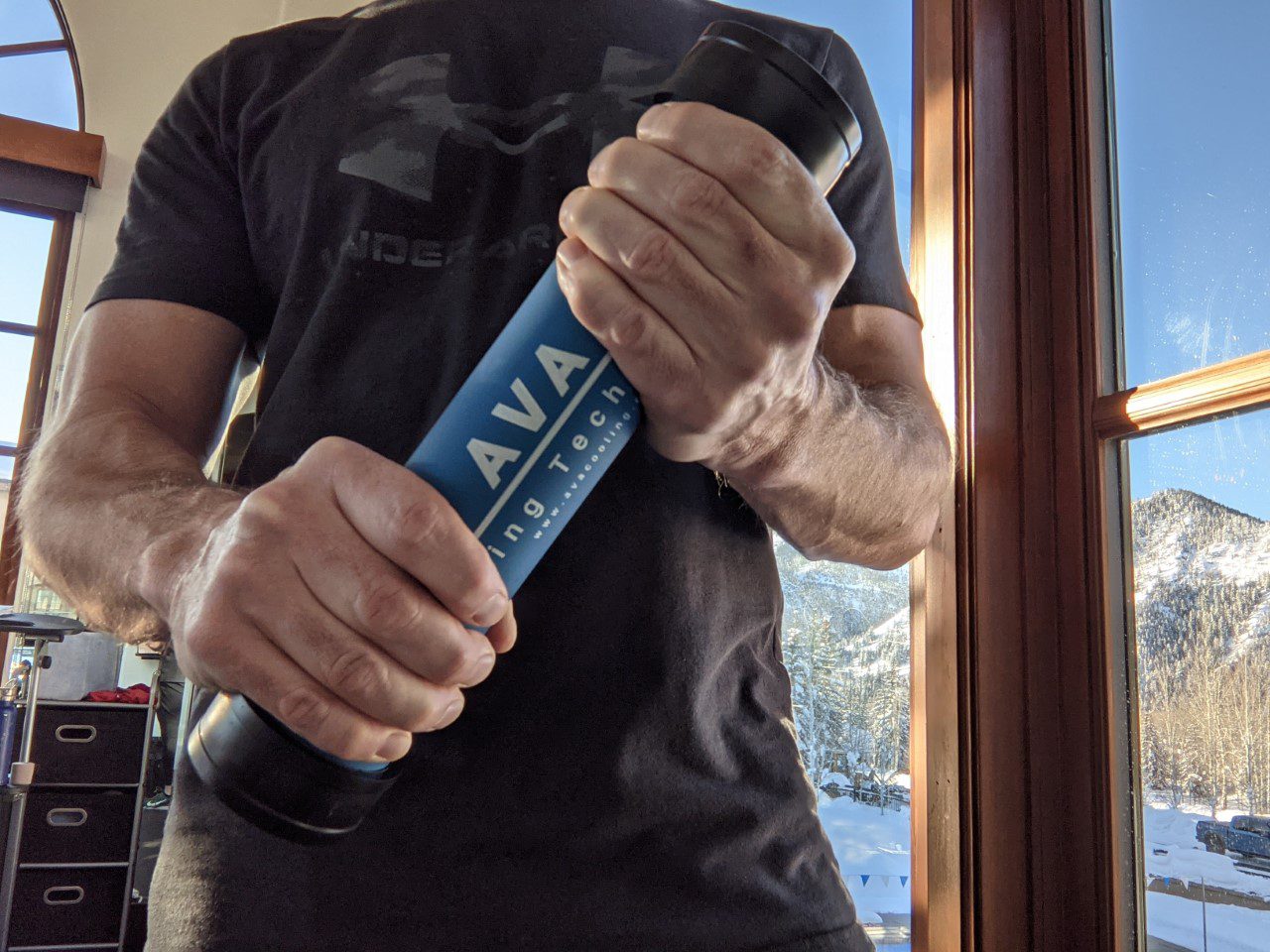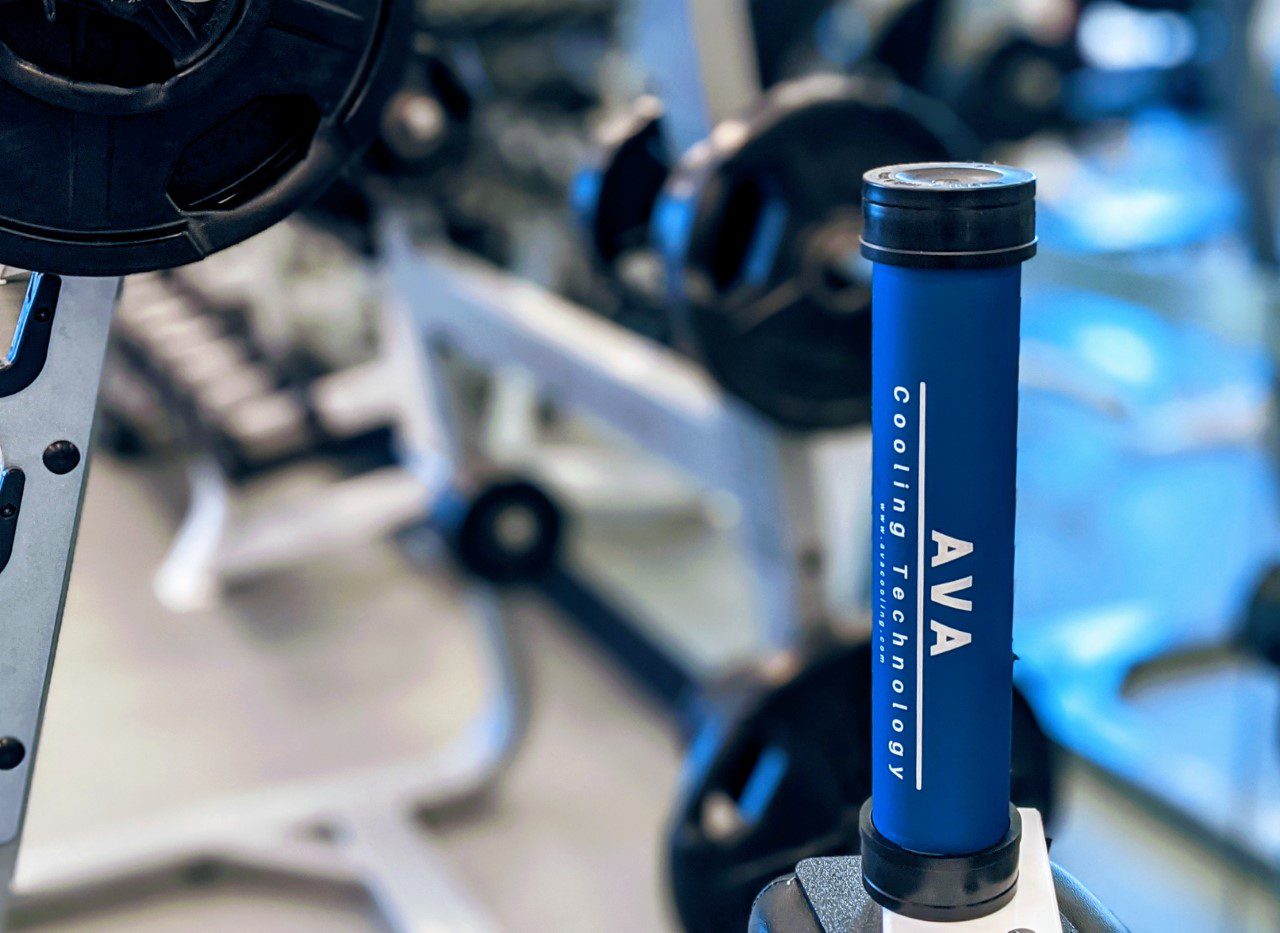Why do we fatigue, and what can we do about it? That is the driving motivation behind the development of AVA Cooling Technology’s revolutionary Anti-Fatigue Charge Bar. Developed by Zenergy’s own Kyle Sela, this simple tool can take your fitness and performance to the next level.
Kyle is a physical therapist and strength and conditioning coach who has been with Zenergy for five years. His approach with athletes is comprehensive, initially working to prevent and treat injuries and then progressing to help them achieve their highest levels of fitness and function. With this mindset, Kyle is always looking for the most advanced and cutting edge ways to help his clients and patients excel. It was from listening to a human performance podcast about temperature regulation with experts in the fields of sports medicine and sports performance that inspired Kyle to develop AVA Cooling Technology, “It was this concept that I hadn’t really considered but that immediately made so much sense. I knew that there would be a way to leverage this physiology and help people in exercise and sports. I just had to figure out a practical way to do it.”
As we exercise, body temperature rises. We’ve all experienced this during a training session, whether lifting weights, doing cardio or competing in sports. A by-product of doing work is a rise in body temperature, especially in the working muscle tissue. This rise in temperature affects the muscle cell rendering it less able to continue contracting – a form of fatigue. Another phenomenon of rising body temperature is that the brain receives signals that hamper motivation. Possibly an evolutionary protective measure, rising body temperature cues our brains to reduce our motivation to continue working hard. So, rising body temperature limits both our ability and our motivation to continue this hard work. What can we do to limit heat-related fatigue and optimize our workout potential?
There is only so much we can do to control external inputs and stay cool. The environment? Clothing choice? Nutrition? Once we’ve exhausted those options, what’s left? In exploring this question, Kyle found promising research from Stanford professor Dr. Craig Heller, who discovered that one of the most effective ways to mitigate heat-related fatigue can be found in the palms of our hands. Our palms are covered with a special kind of hairless skin, known as glabrous. Glabrous skin is especially efficient at mitigating body heat, and is also found on the soles of our feet and hairless portions of the face. Kyle explains that, “We all naturally use these areas of our bodies to help heat and cool our bodies. Think about warming up by holding a hot mug of tea or cooling off by sticking your feet out from under the covers.” The reason glabrous skin is so effective is that, “it has a special network of blood vessels below the surface called arteriovenous anastomoses (AVAs). These AVAs are essentially specialized mini circuits that exist to regulate temperature.”
When applying his findings to the question of exercise and heat fatigue, Dr. Heller discovered that by cooling one’s palms during exercise, both motivation and the ability to work harder increase. His results were remarkable, with improvements of 40-60% in athletic performance when using palm-cooling. Intrigued and a bit skeptical, Kyle started testing this phenomenon on his own. In his strict trials, Kyle experienced a 15-30% improvement in his performance, and decided then and there that Dr. Heller was onto something. Not only was Kyle experiencing elevated performance, his readiness to do the next set had also increased. Dr. Heller had already developed an effective, but large and cumbersome, system for palmar cooling. But Kyle knew there had to be an easier and more practical way to make this promising training tool more accessible.
Through testing and research, Kyle identified the materials he needed to create an affordable and convenient palm cooling solution. He chose a lightweight metal that has a high specific heat capacity, meaning it takes a lot of energy to change its temperature one degree plus or minus. A readily available way to keep the device cold? Cool water, which has an even higher specific heat capacity than the metal, is easy to find at a sink or faucet and keeps the device in the right temperature range for up to an hour of use. Kyle’s research and personalized testing culminated in the Anti-Fatigue Charge Bar, a made-in-Idaho solution that is now providing cooling technology to the hands of elite and everyday athletes worldwide.

How do you use it?
Fill the Anti Fatigue Charge Bar with cool water, ideally 45-60 degrees, which is the average temperature of most water fountains. Hold the charge bar for 30 seconds to 2 minutes between periods of exercise. The charge bar should last for 45-60 minutes. If it gets too hot, refill with cold water. You should see the effects of using the charge bar immediately. “There are a lot of things we can do to enhance performance,” explains Kyle, “but in the moment there is not a quicker or more beneficial thing you can do during a workout.” All you need to experience the benefits of palmar cooling is to hold onto the charge bar for at least 30 seconds. For weight training, this is simple to do between sets. The charge bar benefits endurance athletes as well. It can be used during rest between intervals, or as a way to quickly decrease your body temperature in the time between a warmup and the start of a race. Athletes have even been experimenting with using the charge bar as a way to cool and decompress before going to sleep. Many athletes participate in late games, practices or workouts and the Anti-Fatigue Charge Bar can help bring their temperature down quickly to aid in falling asleep.
Who is using the Charge Bar?
The AVA Cooling Anti Fatigue Charge Bar is such a simple, and powerful training tool that many different types of athletes have started using it. Major League Baseball pitchers cool down with it on the bench between innings. Eastern Washington University’s basketball team is using it between sets in the weight room and during breaks in the action during games. Olympic gold medal winning swimmer Lydia Jacoby is incorporating this revolutionary tool in her training as she gears up to break the world record in the 100-meter breaststroke. Kyle sees the positive effects of using this technique daily at the gym. His clients use the charge bar during workouts with him, and he hears from customers around the world who use it in between intervals in peloton workouts. Across the board the Anti-Fatigue Charge Bar is a game changer for rapidly increasing training capacity.
AVA Cooling Technology’s Anti-Fatigue Charge Bars are available to demo and purchase at Zenergy. You can learn more or purchase online at avacooling.com.
